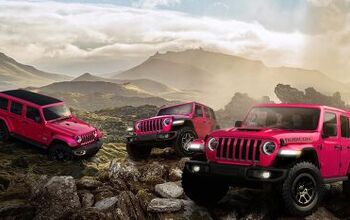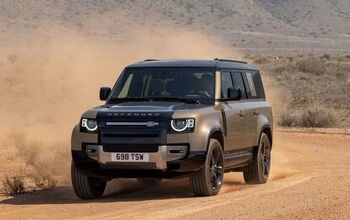Would You Rather: Mitsubishi Mirage vs Nissan Versa

With automakers having lost the plot in terms of new-vehicle pricing and dealers still tacking on markups, there are loads of people in need of cheap, reliable transportation. While you may not believe it, there are still models to be had for under $20,000 (USD). But your choices are effectively limited to the soon-to-be-discontinued Nissan Versa and Mitsubishi Mirage, begging the question of which one should you buy before they’re gone.
Presumed to be taken off the market within a year or so, the death of these vehicles will completely eliminate the existence of subcompact cars on our market. American manufacturers discontinued production of their smallest vehicles years ago to counter U.S. emissions regulations and European brands don’t bother shipping them across the ocean. That has left Asian manufacturers to carry the torch. However, those aforementioned regulations and American tastes have made them broadly unpopular and not terribly profitable. Nissan and Mitsubishi are the holdouts.
Both models see starting MSRPs right around $17,000 for the most basic transportation available in 2024. But the Versa actually starts out with the edge here due to the fact that the base Mirage hatchback (above) is significantly smaller. A fairer comparison would be between the Nissan the larger Mitsubishi Mirage G4 sedan that adds another $1,000 to the base price. However, the final sticker price is likely to vary between dealerships to a point that the above probably won't matter.
All Versas are powered by a 1.6-liter DOHC inline four with an aluminum block and port fuel injection. The naturally aspirated unit produces 122 horsepower and 114 lb-ft of torque which needs to be accessed a little higher in the rev range. The Mirage uses a smaller 1.2-liter DOHC inline three with an aluminum block and port fuel injection. Similarly naturally aspirated, it makes just 78 horsepower and 74 lb-ft of torque which likewise needs some revving before you can use all of it.
Both models are front drive and equipped with continuously variable transmissions (CVTs) that are practical but don’t add much personality. With the exception of the G4 version of the Mirage, manual transmissions are available via the base trims. But you’ll sacrifice some efficiency and you’re probably not going to come across many in the wild. This is also a ding for the Nissan, since you have to spend a little more to get out of a manual than you would at Mitsubishi — nullifying the pricing advantage held by the former.
The good news is that these relatively simple powertrains should be easy to service and don’t appear to be over stressed, potentially extending their lifespan. They’re also ludicrously economical, achieving at least 32 mpg in town and 40 on the highway with the CVT. The Mitsubishi can actually manage 34 mpg city and 41 mpg on the highway. But getting there requires you to take it extremely easy on the throttle of a car that rarely feels fast enough.
On level ground, the Mirage is capable of hitting 60 mph in under 13 seconds. Meanwhile, the Versa can usually accomplish the same in fewer than 10 seconds and will continue to out accelerate the Mitsubishi. While those figures probably aren’t all-that important to those shopping this particular vehicle segment, it needs to be said that drivers will probably be entering the expressway with the pedal down on both vehicles most of the time and that a little extra pep could offer some peace of mind.
Interior comfort is probably more meaningful for shoppers and the Versa definitely offers the smoother ride. This is perhaps the result of it weighing a few hundred pounds more than the Mirage, which just barely clocks in over a ton. But it soaks up the bumps better and would be the one to take if you were planning on covering a lot of ground without stopping.
Cabins are austere but extremely functional on both models. However, the Nissan feels more modern and cushy. There’s just too much exposed plastic and older hardware in the Mitsubishi. It likewise still uses the now retro turn-key ignition. Although, that last item could be argued as a victory for the Mirage the next time you find yourself holding a key fob with a dead battery.
While both cars will let you climb the trim ladder, there doesn’t appear to be much of a point with the Mitsubishi Mirage. You’re really only getting larger wheels out of the deal and it doesn’t offer much else beyond automatic headlamps and lane departure. Automated emergency braking is standard. However, most other advanced driving aids aren’t even available as an option — which will be something that appeals to some drivers and not others.
Nissan has more standard safety features and will let you option things like blind-spot monitoring and adaptive cruise control. But there are a few items absent in terms of infotainment. None of the lower trims come with Apple CarPlay or Android Auto. In order to get them, you have to opt for the Versa SV or SR that come also with larger wheels — at which point you’ll be spending over $20,000 and probably should have been browsing the Nissan Sentra.
This is also the point where what looked like an easy victory for the Nissan Versa becomes much more complicated. While the Mitsubishi Mirage G4 doesn’t boast any obvious mechanical advantages and is very clearly the older design, just about everything a person would want is made available on the base trim. To get the most out of the Nissan Versa, consumers are incentivized to spend a little more. The Mitsubishi also foregoes a lot of the tech that many drivers today consider obnoxious and overbearing. Granted, this is the result of the brand simply not installing them to save money. But there is still a market for those appreciating simplicity and the Mirage G4 is about as basic as things get these days.
In most cases, shoppers can find a Mitsubishi Mirage G4 ES priced about grand less than a comparable Nissan Versa S in the wild. Considering the former throws in Apple CarPlay and Android Auto, it could be considered the better deal. However, the latter is probably the better car due to it boasting a little more interior/cargo space, a stronger motor, and more modern features.
Still, this is a quadrant of the market where buyers are extremely price sensitive and optioning the Nissan to trump the Mitsubishi in every single metric requires you to spend the kind of dough where you might have just been better off going up a segment or shopping the used market. Running with the manual versions of these vehicles will help avoid this conundrum somewhat whilst saving shoppers even more money. But actually locating one can be fairly difficult because dealer allocations are minimal.
[Images: Nissan; Mitsubishi]
Become a TTAC insider. Get the latest news, features, TTAC takes, and everything else that gets to the truth about cars first by subscribing to our newsletter.

A staunch consumer advocate tracking industry trends and regulation. Before joining TTAC, Matt spent a decade working for marketing and research firms based in NYC. Clients included several of the world’s largest automakers, global tire brands, and aftermarket part suppliers. Dissatisfied with the corporate world and resentful of having to wear suits everyday, he pivoted to writing about cars. Since then, that man has become an ardent supporter of the right-to-repair movement, been interviewed on the auto industry by national radio broadcasts, driven more rental cars than anyone ever should, participated in amateur rallying events, and received the requisite minimum training as sanctioned by the SCCA. Handy with a wrench, Matt grew up surrounded by Detroit auto workers and managed to get a pizza delivery job before he was legally eligible. He later found himself driving box trucks through Manhattan, guaranteeing future sympathy for actual truckers. He continues to conduct research pertaining to the automotive sector as an independent contractor and has since moved back to his native Michigan, closer to where the cars are born. A contrarian, Matt claims to prefer understeer — stating that front and all-wheel drive vehicles cater best to his driving style.
More by Matt Posky
Latest Car Reviews
Read moreLatest Product Reviews
Read moreRecent Comments
- TheMrFreeze JD Power's surveys mean nothing to me. We live in an age where we have unprecedented access to actual, relevant data, and by that I mean working mechanics who see all of these cars up close and are willing to share what's good and what's crap. The wife drives a Fiat 500...had I listened to JD Power or Consumer Reports or whatnot we never would have bought one, but more than one mechanic I talked to said they were pretty reliable cars. Bought one, guess what...it's been reliable.
- Akear Mary Barra has little or no feel for the market. This is yet another reason why GM will perform better when she retires. Barra's track record at GM is about as good as Biden debate performance last week.
- Peter Nissan should hire someone to explain basic economics to their Board of Directors.
- Jeff China now has the manufacturing capacity to produce 1/3 of the World's vehicles but under the current geopolitical environment this will not happen. As someone above stated all bets are off if China invades Taiwan. What many don't understand is that China plans for the long term and can wait it out till the geopolitical environment becomes less hostile toward China. I am not endorsing Chinese trade just stating that China is preparing for the future.
- 3-On-The-Tree Im glad it was fixed in time that would’ve been a huge pain and inconvenience to you if it had broke. My 2009 C6 Corvette LS3 has been great with no recalls. My 1985 Toyota Land Cruiser FJ60 actually had a recall for the gas tank and seat belt warning stickers about 10 years go and Toyota fixed it, got a new tank, fuel lines and stickers.









































Comments
Join the conversation
While the Mirage makes me ill just looking at it, I believe that Mitsubishi is well above Nissan in reliability. Everyone I knew who's sister bought a Versa had constant issues with them.
I like the grill treatment of all Mitsubishi products. It is an interesting and original design.